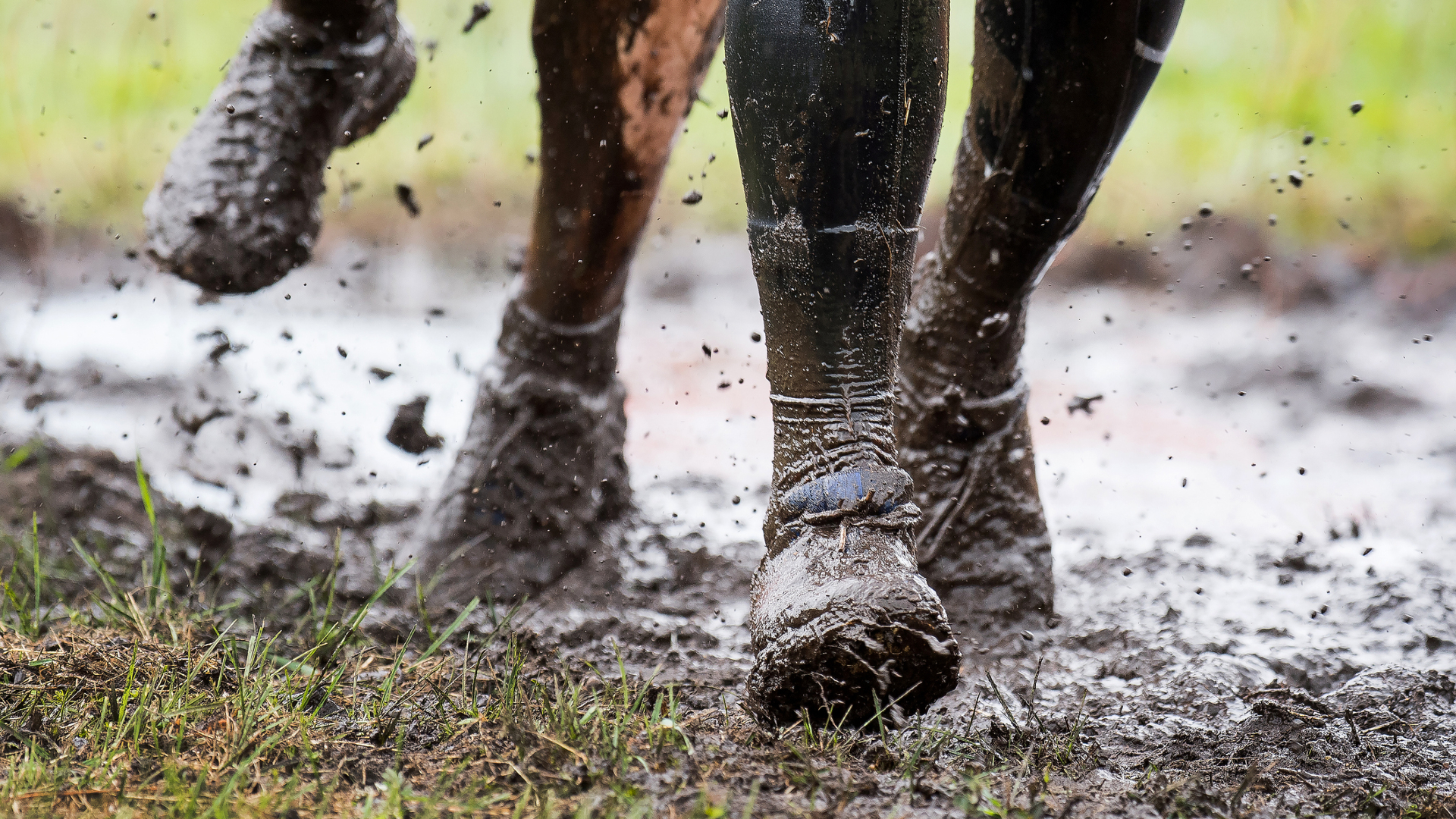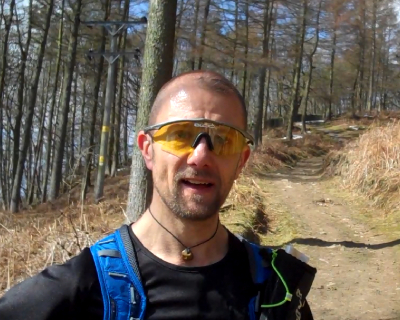Running in mud: how to improve your times when trails get dirty
Getting dirty is an inescapable element of trail running, but learning how to go running in mud will make a big difference to your experience and race times

Mud. Bog. Sludge. Mire. Clag. Muck. Whatever you call it, chances are that, if you’re regularly heading off road, you’re going to be running in mud sooner rather than later. The challenge is ensuring you find your way through it gracefully, without ending up on your backside with your dignity in tatters and your clothes covered in the brown stuff.
There are several things you can do to prevent coming a cropper and slipping over with all the grace of a baby giraffe. Here we explain how to go running in mud.
Embrace the dirt
It isn’t ideal coming across a big patch of unavoidable mud when you’ve just set off on your run. The last thing you want is wet feet, filthy legs and big clods of the stuff clinging to your new mud running shoes for the rest of your trip. So this is where many people hesitate and faff about, trying to skirt round the sludgy patch, delicately placing their toes down to keep their feet dry while trying to avoid the worst. However, this is usually all wasted effort. You could try to keep that approach going for the duration of your run, but it defeats the purpose of going for a trail run in the first place.
Just accept the fact that you are going to get muddy and run through it like it isn’t there, and you will be out the other side much quicker while gaining the benefits of a continuous run rather than a stop-start effort. Running in mud can help develop leg strength too, which is another reason why you should embrace the challenge.

Choose shoes well, or lose your shoes quickly
If you know you're going to be running in mud, there’s no point wearing your brand new, white trainers that you want to keep clean. Nor is there any point wearing road shoes with very little grip. The ideal shoes for running in mud have several specific features, and they’re also the ones that you’re happy to get dirty.
You need a shoe with an aggressive tread pattern that grips well and prevents you from slipping. Some shoes feature a close-fitting elasticated tongue that stops mud and other debris from getting inside the shoe. Many have mesh to facilitate quick drainage while other shoes are made from waterproof material to keep water and gloop out.
Our guide to choosing trail running shoes should point you in the right direction.
In deep mud there is a danger that your shoes can actually come off as you pull your foot up, so make sure to lace them nice and tight. Often there is an extra pair of lace holes on trail running shoes, which helps lock your heels in place if used. You may also want to consider wearing the best trail running socks that are waterproof if you know the mud is going to be particularly wet – they probably won’t keep your feet totally dry, but they may keep them warmer and a bit more comfortable.
All the latest inspiration, tips and guides to help you plan your next Advnture!
Technique matters
As already mentioned, messing about to try and keep your shoes clean isn’t particularly efficient. When running in mud you need a confident stride with a firm foot plant. Aim to take a slightly shorter stride than usual, so when your foot hits the ground your hips are above your feet, and land on your midfoot rather than heel in order to engage all of the tread on your shoes.
Don’t try to change direction or slow down abruptly, but do so gradually. Taking a wider arc through a bend or coming to a halt slowly is less likely to result in you sitting on your backside in the mud.
Let the trail talk to you
Learn to read the ground ahead. Soon you’ll find that you can spot the deepest sections and recognise the difference between deep bogs and vegetation that gives a slightly firmer footing. This knowledge will enable you to plan the easiest route through the mire.
When running in mud with other people, try following a couple of paces behind someone and watching where they put their feet. Often their feet will compress the ground, giving you a firmer surface if you literally follow in their footsteps. On the other hand if they sink in up to their knees you know to take a different route!

Train for running in mud
As with running on any surface, you need to train for the specifics. If you have a race coming up that you know will be muddy, you need to prepare. And if you want to get good at running in mud, you need to train by running in mud.
However, this isn’t the only thing you can do to improve. Road running predominantly involves forward steps with little sideways movement but running off road in muddy conditions requires much more lateral movement (for example jumping diagonally across a deep puddle). By including sideways movement exercises in your strength training sessions you can strengthen the muscles that generate such movements. This will mean that you are stronger and less likely to fatigue on a run or race where lots of side stepping is required. Simple exercises you do could include sideways lunges, hopping side to side and sideways walking using resistance bands around the knees or ankles.
Come (home) clean
Once you’ve completed your muddy run or race you won’t want to jump straight into the car in a filthy state afterwards. Take a flask of warm water, a flannel and an old towel to clean off the worst of the mud then put on a change of bottoms, socks and shoes. A beach towel or cover on the seats is a good idea too.
So, next time you’re tempted to put off going for a run because it’s been raining and you don’t want to be running in mud, don’t. Embrace the mucky stuff – you might find you enjoy getting dirty once in a while.
An experienced, competitive, fell runner and UK Athletics coach, Dave specialises in fell and mountain running. His personal achievements include winning the 2015 English Fell Running Championships (V50 category) and completing the Bob Graham, Paddy Buckley and Charlie Ramsay Rounds. He has contributed reviews and training articles to magazines including Trail Running, Outdoor Fitness and the Fellrunner magazine. His most embarrassing moment was having a running shoe fall apart completely while high in the Lake District fells.

